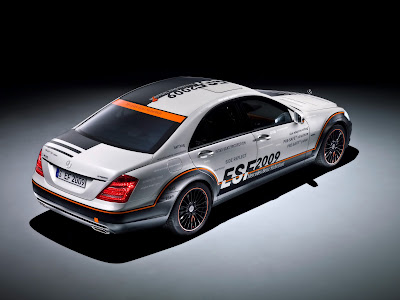 Impactul visual pe care C-Métisse il are asupra privitorului este foarte mare. Lung (4,74 m), lat (2 m) si jos (1,24 m), masina este impresionanta prin forma si aproape ca intimideaza privitorul. C-Métisse impune respect, dar nu creaza sentimentul de distanta intre privitor si masina, respectul fiind acompaniat de o atractie irezistibila fata de designul unic al masinii.
Impactul visual pe care C-Métisse il are asupra privitorului este foarte mare. Lung (4,74 m), lat (2 m) si jos (1,24 m), masina este impresionanta prin forma si aproape ca intimideaza privitorul. C-Métisse impune respect, dar nu creaza sentimentul de distanta intre privitor si masina, respectul fiind acompaniat de o atractie irezistibila fata de designul unic al masinii. Seductia modelului C-Métisse este exprimat si prin sentimentul de putere latenta pe care o imprima. C-Métisse readuce in minte balanta perfecta intalnita in designul masinilor din epoca de aur a automobilelor Grand Touring.
Seductia modelului C-Métisse este exprimat si prin sentimentul de putere latenta pe care o imprima. C-Métisse readuce in minte balanta perfecta intalnita in designul masinilor din epoca de aur a automobilelor Grand Touring. Liniile de desig ale modelului C-Métisse reflecta si dorinta de a obtine performante aerodinamice exceptionale, de a permite o imbunatatire a reducerii de carburant si a emisiilor de CO2, dar in acelasi timp de a integra ultimele descoperiri din domeniul tehnic.
Liniile de desig ale modelului C-Métisse reflecta si dorinta de a obtine performante aerodinamice exceptionale, de a permite o imbunatatire a reducerii de carburant si a emisiilor de CO2, dar in acelasi timp de a integra ultimele descoperiri din domeniul tehnic. Pozitionate de ambele parti ale logo-ului CITROËN pe grila radiatorului, farurile modelului C-Métisse sunt echipate cu un rand de LED-uri care se aprind progresiv, depinzand de unghiul volanului si de viteza autovehiculului. Aceasta caracteristica asigura luminozitate excelenta atunci cand vehiculul este condus noaptea pe un drum virajat.
Pozitionate de ambele parti ale logo-ului CITROËN pe grila radiatorului, farurile modelului C-Métisse sunt echipate cu un rand de LED-uri care se aprind progresiv, depinzand de unghiul volanului si de viteza autovehiculului. Aceasta caracteristica asigura luminozitate excelenta atunci cand vehiculul este condus noaptea pe un drum virajat. In acelasi timp, pneurile Michelin contribuie la caracterul sportiv al coupe-ului, lucru subliniat si de surubul central. Mai mult, dezvoltarea acestor pneuri a fost integrata in procesul de design, pentru a optimiza rezistenta la aer si pentru a contribui la coeficientul excelent de franare al vehiculului. (Cd de 0.30).
In acelasi timp, pneurile Michelin contribuie la caracterul sportiv al coupe-ului, lucru subliniat si de surubul central. Mai mult, dezvoltarea acestor pneuri a fost integrata in procesul de design, pentru a optimiza rezistenta la aer si pentru a contribui la coeficientul excelent de franare al vehiculului. (Cd de 0.30).
Sursa: Citroen Romania


















































